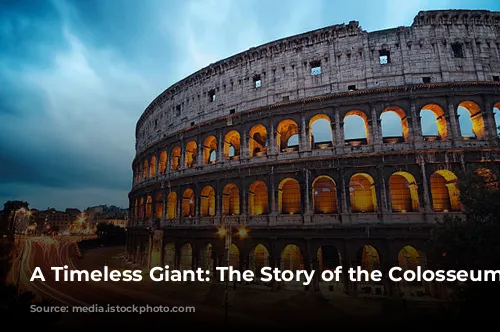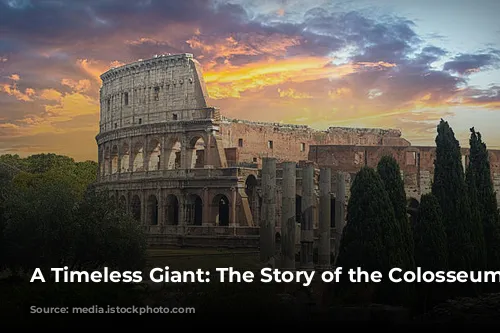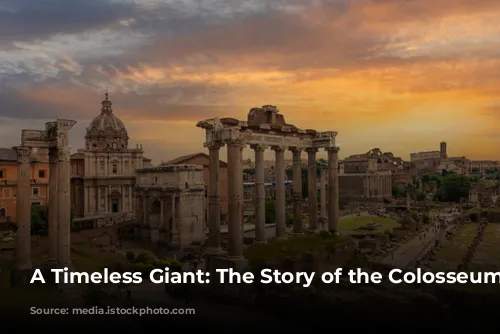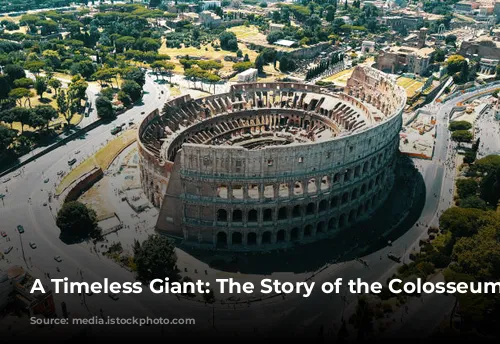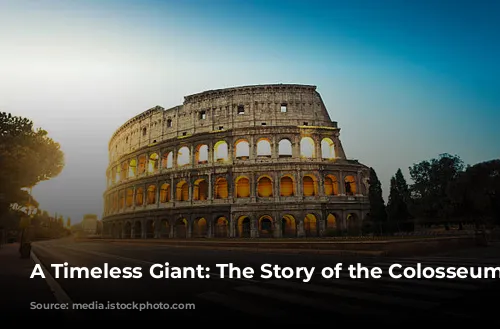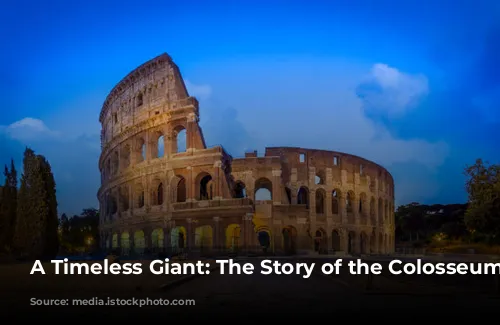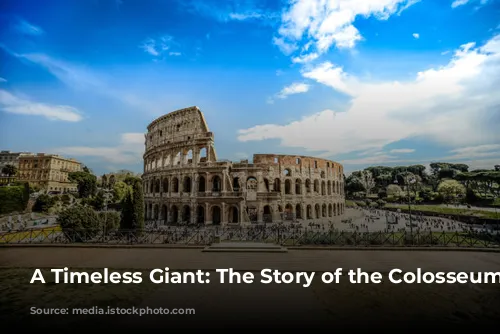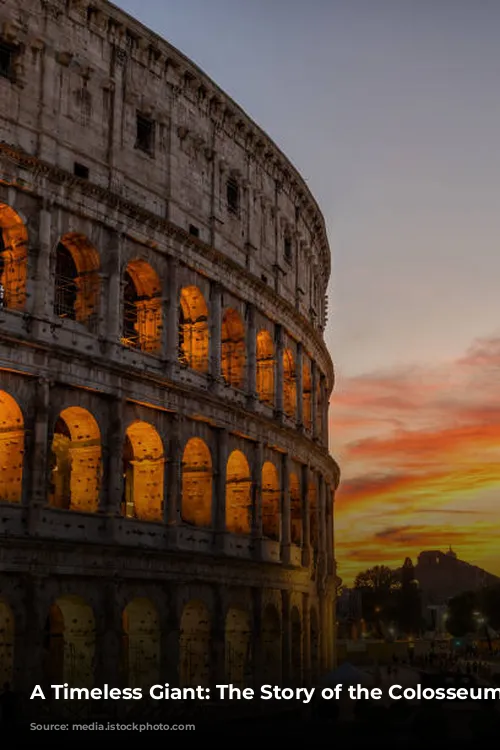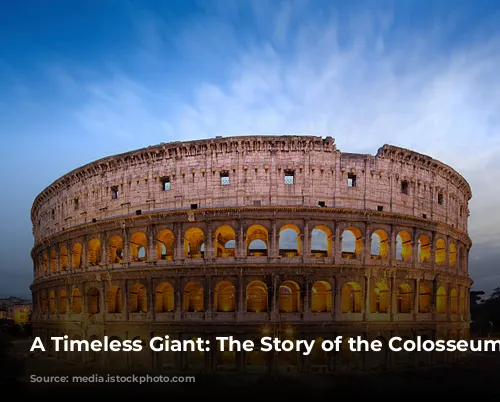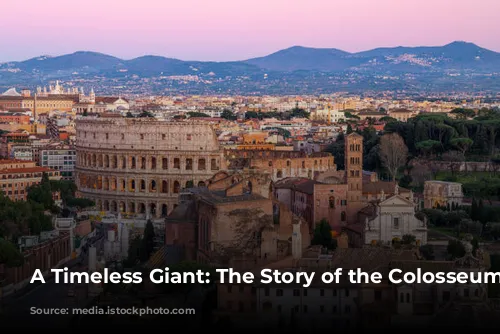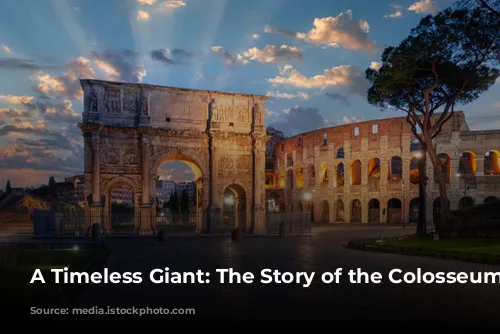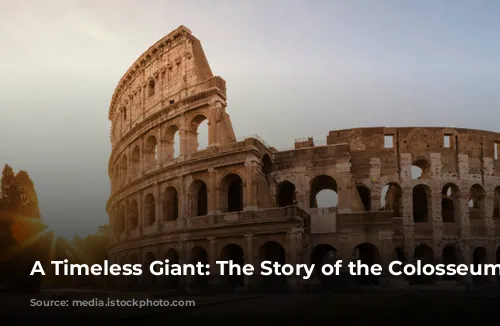The Colosseum stands as a testament to the grandeur and complexity of the Roman Empire, a symbol of both its triumphs and its fall. From its construction in the 1st century AD to its modern-day status as a global icon, the Colosseum has witnessed the rise and decline of empires, the evolution of cultures, and the changing face of humanity itself.
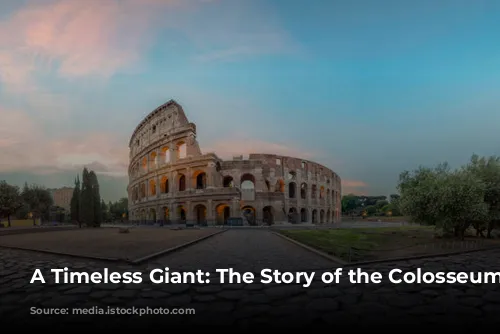
A Monument to Power and Entertainment
The Colosseum, originally known as the Flavian Amphitheater, was commissioned by Emperor Vespasian as a gift to the Roman people, a gesture of goodwill after the tumultuous reign of Nero. Its construction, completed by Vespasian’s son Titus in 80 AD, was a spectacle in itself. It was designed to be a grand arena, a stage for gladiatorial combats, mock battles, and even hunts involving exotic animals.
The Colosseum’s size and design were breathtaking. It could accommodate up to 50,000 spectators, who were entertained by a variety of spectacles. From the brutal clashes of gladiators to the thrilling hunts featuring exotic beasts, the Colosseum was a center of entertainment and a reflection of the Roman fascination with violence and spectacle.
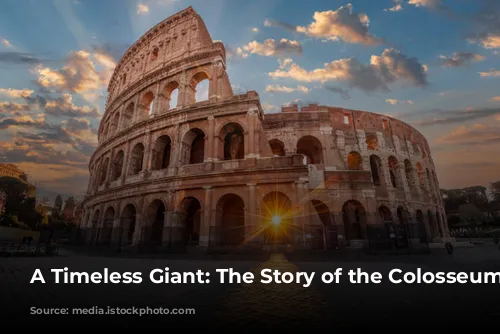
From Glory to Decay
As the Roman Empire declined, so too did the Colosseum. The once-grand arena was left to decay, its glory fading into the mists of time. The Colosseum was stripped for its building materials, with its stones being used to construct other buildings in Rome. Even the iron clamps that held the Colosseum’s structure together were melted down and reused.
In its later years, the Colosseum was used for more mundane purposes. The arena floor was used as a cemetery, while its vaulted spaces were turned into workshops and dwellings. Even the powerful Frangipani family, a prominent Roman clan, used it as a fortified castle. The Colosseum, once a symbol of Roman power, became a mere shadow of its former self.
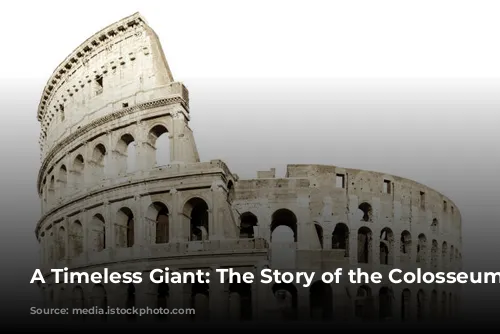
Rebirth and Regeneration
However, the Colosseum’s story is not simply one of decline. A turning point came in the 18th century when Pope Benedict XIV declared the Colosseum a holy place. The belief that the blood of Christian martyrs had been spilled in the arena gave the building a newfound significance, one that would help to preserve it. The Colosseum, once a symbol of Roman brutality, was now a place of pilgrimage and reflection.
Since then, the Colosseum has undergone numerous restorations, each one aimed at preserving this magnificent monument. The Colosseum is now one of the most popular tourist attractions in the world, welcoming millions of visitors each year. It stands as a symbol of Rome’s enduring legacy and a reminder of the power of history to endure.
The Colosseum is a true marvel of engineering and architecture. It has witnessed history unfold over centuries, its walls bearing silent testimony to the triumphs and tragedies of the Roman Empire. Its story is a reminder of the cyclical nature of power and the enduring power of human ingenuity. From its grand beginnings to its subsequent decline and eventual rebirth, the Colosseum’s story is one that continues to captivate and inspire generations.
